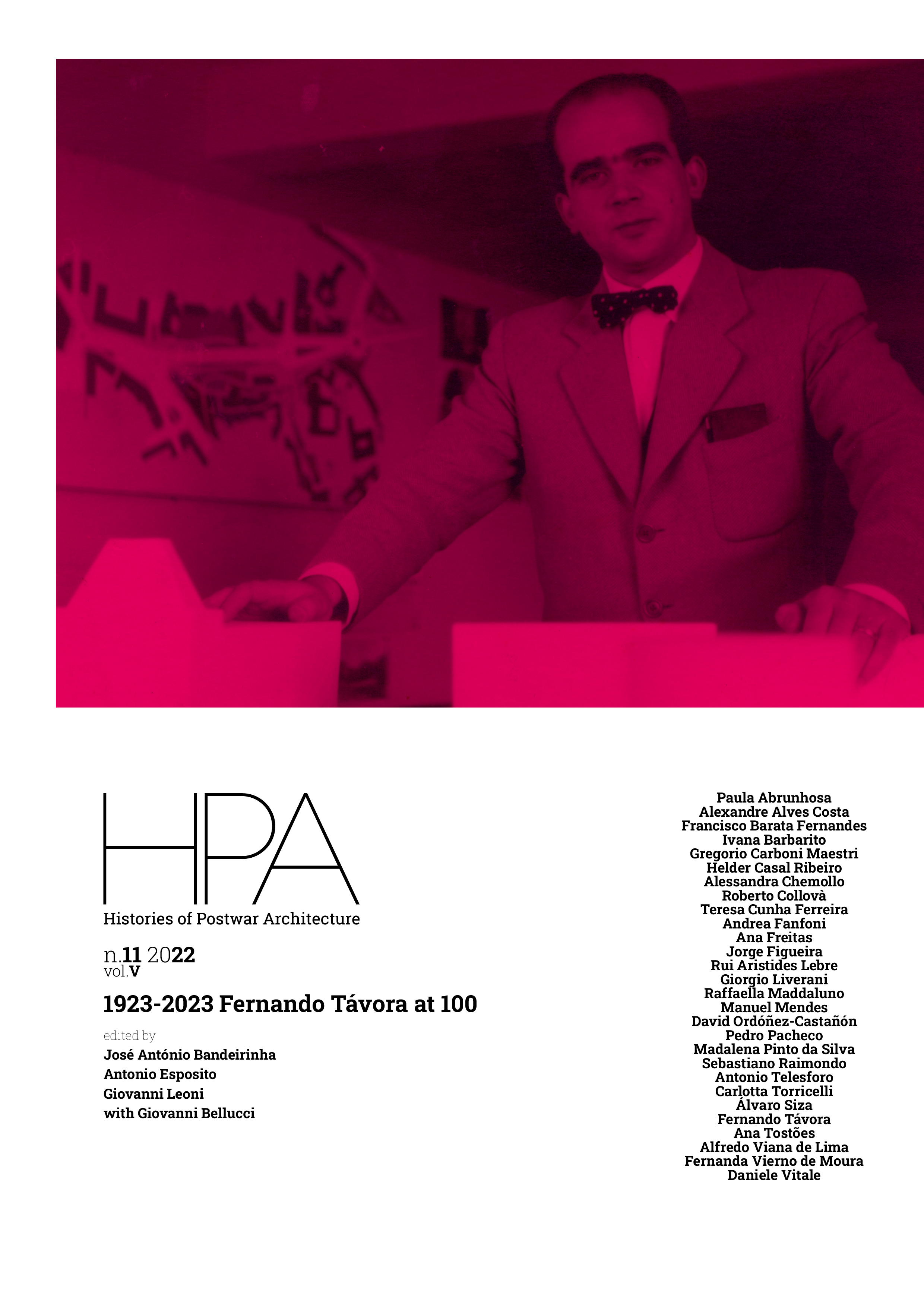A Project with Many Dates. Fernando Távora, Santa Cruz and Sansão Square in Coimbra
DOI:
https://doi.org/10.6092/issn.2611-0075/19799Keywords:
Távora, Sansão Square, Coimbra, Heritage, Urban DesignAbstract
This text seeks to relate Fernando Távora’s urban design of Sansão Square, in Coimbra, with the social, cultural and material conditions that surrounded it and, above all, with some particular characteristics of Távora’s mindset regarding his own design practice.
On examining the process, it becomes abundantly clear that the relationship between the developer, the supervisors, the architect and the builder was far from balanced. Fernando Távora submitted the preliminary project for approval in April 1993. From then until construction was completed, by the end of 1997, a myriad of problems arose during the natural development of the project: from delays in formalising the contract, to successive disagreements over the choices of materials, or even the attempt to include different elements from the approved project. Without any kind of concessions to the traditionalist way, Távora sets out on the 8 de Maio Square project — one of his dearest, in his own words — with full awareness that historical reposition is not something to be searched for, under the dust of a thousand circumstances, it is not something flexible that could be adapted to the occasion, under risk of losing its tie to the truth.
Finally, we intend to reflect on the meaning of time and space limits in design practice and in the final result of architecture. The duration of a project, of a work, time itself, is not, never has been and never can be a condition for inclusion or exclusion in any category.
Downloads
References
Alves Costa, Alexander. “Primeira anotação do Curso de Arquitetura de Coimbra (2012).” In Id. Centralidades do Real. Coimbra: E|d|arq, 2018, 151-160.
Borges de Figueiredo, Antonio Cardoso. Coimbra Antiga e Moderna. Lisboa: Livraria Ferreira, 1886.
Carvalho, Jorge. ed., Urbanismo Coimbra Anos 90. Coimbra: Câmara Municipal de Coimbra, 1993.
Correia, Virgilio. “A praça de Sansão e o mosteiro de Santa Cruz em 1796.” In Virgilio Correia, Obras, vol. I, 274-283. Coimbra: Universidade de Coimbra, 1964-1978.
Fonseca Almeida, Sandra Maria. A Cidade Baixa. Evolução e Caracterização do Espaço Urbano, Final exam of the Degree in Architecture of the Faculty of Sciences and Technology of the University of Coimbra, Coimbra, 1997.
Lobo, Rui. Santa Cruz e a Rua da Sofia. Arquitectura e Urbanismo no Século XVI. Coimbra: E|d|arq, 2006, 46.
Marnoto Bandeirinha, Rosa. O Limiar do Claustro. Origens e práticas do Departamento de Arquitectura de Coimbra. Master’s Thesis in Architecture submitted to the Department of Architecture, under the supervision of Professor Jorge Figueira, 2013, 151-161.
Mattoso, José. “A formação da nacionalidade no espaço ibérico.” In História de Portugal. Segundo Volume. Mem-Martins: Círculo de Leitores, 1993: 262.
Panofsky, Erwin. “Titian’s Allegory of Prudence; A Postscript.” In Meaning in the Visual Arts. New York: Doubleday Anchor Books, 1955.
“Pro-Urbe”. Diário de Coimbra, August 2, 1996.
Rossa, Walter. Diver[sc]idade. Urbanografia do Espaço Urbano de Coimbra até ao Estabelecimento Definitivo da Universidade. Coimbra: Doctoral thesis submitted to Faculdade de Ciências e Tecnologia da Universidade de Coimbra, 2001.
Tafuri, Manfredo. La Dignittà dell’Attimo Trascrizione multimediale di Le forme del Tempo: Venezia e la Modernità. Venezia: PL IUAV, 1994.
Távora, Fernando. “Arquitectura e Urbanismo a lição das constantes.” In Lusíada. Revista Ilustrada de Cultura, Vol. 1, no. 2 (1952), 153-157.
Távora, Fernando. Teoria Geral da Organização do Espaço. Arquitectura e Urbanismo. A lição das constantes (Porto: FAUP Publicações, 1993), 12.
Downloads
Published
How to Cite
Issue
Section
License
Copyright (c) 2022 José António Bandeirinha

This work is licensed under a Creative Commons Attribution 4.0 International License.





